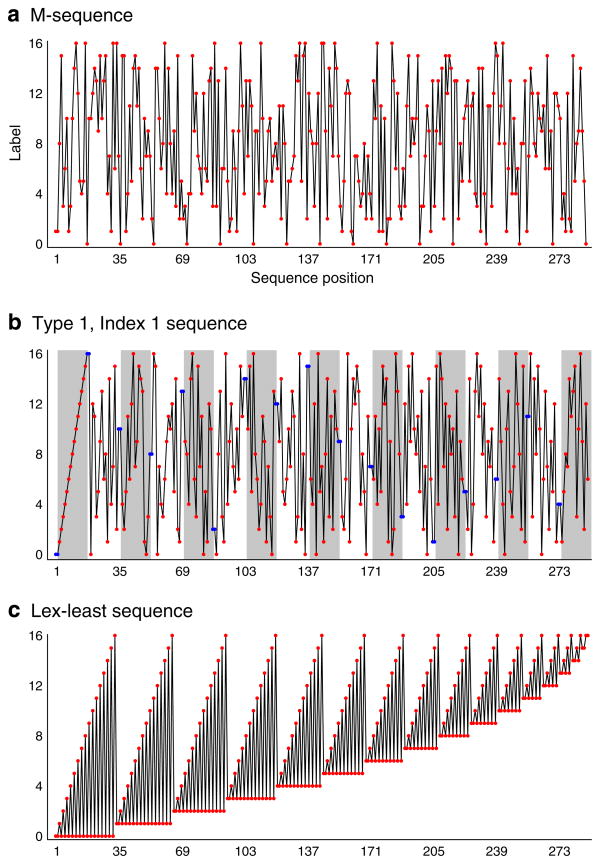Fig. Appendix B1.
Examples of particular k=17, n=2 de Bruijn sequences. Note that the apparent “ordering” at the start some of the sequences is a consequence of the use of the natural numbers as sequence labels. In application, there is no requirement that the initial stimuli presented to a subject will have a perceptual ranking, as the assignment of labels to stimuli may be arbitrary. (a) M-sequence. (b) Type 1, index 1 sequence. Gray bars indicate the permuted “blocks” of the labels, and the repeated labels at the borders of the blocks are indicated by blue points. (c) Lexicographically-least sequence.

